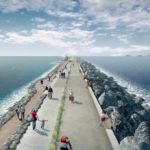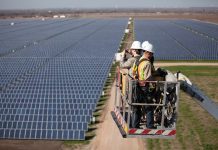 The government has confirmed it will not offer bill payer support to the proposed tidal lagoon in Swansea Bay.
The government has confirmed it will not offer bill payer support to the proposed tidal lagoon in Swansea Bay.
Energy secretary Greg Clark said the decision not to back the scheme was made on grounds of cost and value.
He told the Commons “the programme of six tidal lagoons, the first of which is Swansea Bay … does not meet [government] requirements for value for money.” He said it would therefore “not be appropriate to lead [the developers] to believe public funds could be justified”.
Clark said nuclear and offshore wind could deliver more reliable power for less money. He said the costs were “so much higher than alternative sources of low carbon power, that it would be irresponsible” to award a contract.
Tidal Lagoon Power (TLP) had been lobbying for a 60-year bilateral contract for difference (CfD), a mechanism which guarantees a set price for power.
The Welsh government was also reportedly prepared to invest nine figures of taxpayer cash into the scheme. With that support, CEO Mark Shorrock recently told MPs that the lagoon could deliver renewable power at the same per megawatt subsidy as bilaterally awarded in 2013 to EDF for Hinkley Point C (£92.50/MWh rising with inflation).
However, when pressed for a like-for-like comparison over 35-years, Shorrock said the required strike price would be “about £150/MWh”.
The developers had argued that the project would create jobs, further development opportunities, including a 3.2GW lagoon at Cardiff, and potentially export revenues for the UK. The scheme appeared to have partisan support from several members of the usually independent Beis Select Committee.

However, 18-months after former energy minister Charles Hendry’s review unequivocally backed the proposal, government has finally rejected its conclusions, which, without a radical rethink, may leave the lagoon dead in the water.
Watch Clark’s statement, and opposition reaction, here.
Related stories:
Welsh government cash ‘not a double subsidy’, says tidal lagoon developer
Atlantis boss: Think big to make tidal power cheaper than Hinkley C
Atlantis plans 160MW Wyre tidal barrage
Engineers tell government to pay for tidal power
Follow us at @EnergystMedia. For regular bulletins, sign up for the free newsletter.




3,200 MW Hinkley Point C nuclear power plant [npp] will have a design life of 60 years at a [contracted] capital cost of £18,000 million; every year, it will generate 25,228,800 MWh of 24/7 electricity. By contrast, 320 MW Swanseas TL will have a lifespan of 120 years and a capital cost of £1,300 million; every year, it will generate 530,000 MWh of intermittent, grid-degrading electricity.
It would take nearly 48 such tidal lagoons, at a capital cost of £61,882 million and occupying an area of 547 sq km, to generate as much of this problematic electricity every year as the 24/7 electricity generated by Hinkley from its 1.75 sq km site. The npp would have to be built a 2nd time, on the same site, using much of the same infrastructure to generate for 120 years – but this would only have a capital cost of £36,000 million.
Why pay over 70% more for the delivery of a truly pathetic, intermittent, grid-degrading product that will forever require fossil-fuelled back up?
Why desecrate hundreds of square kilometers of our near-shore sea beds, destroy precious ecosystems and wipe out species for such a pathetic product?
Why use so much CO2 emitting concrete and millions of tonnes of quarried rock, with the attendant environmental destruction, for such a pathetic product?